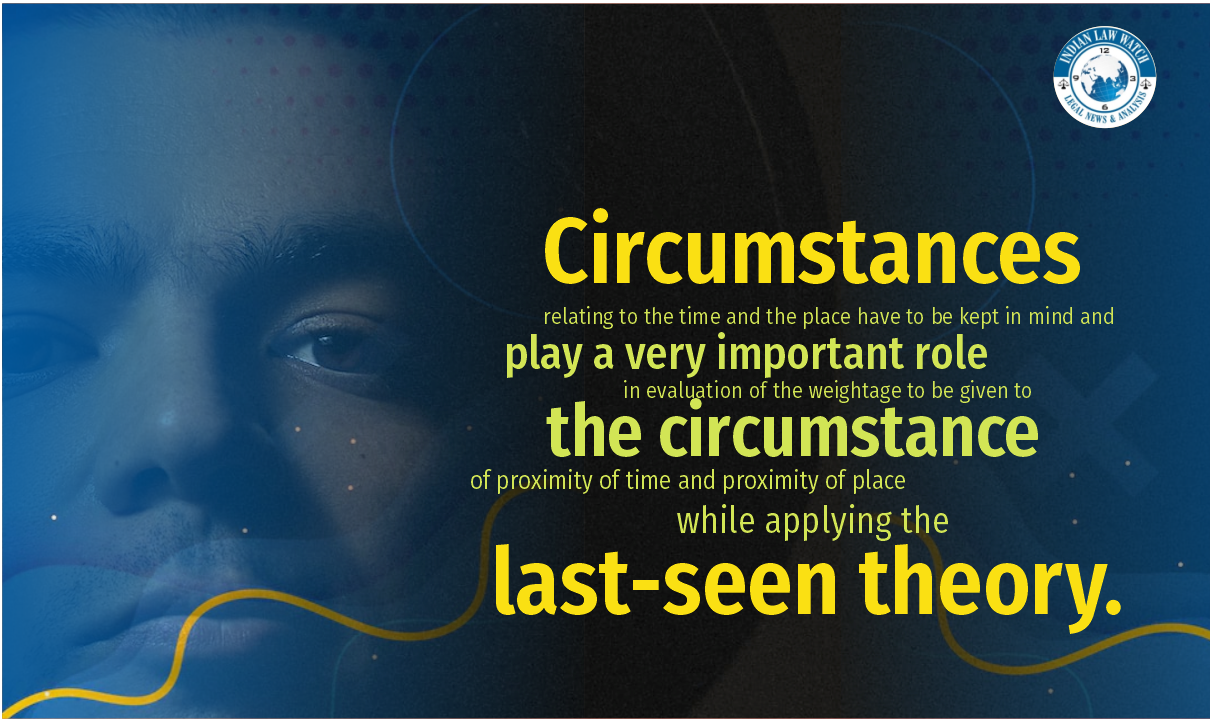
While setting aside all layers of doubt on when guilt of appellant for murder can be presumed, the Delhi High Court in a most learned, laudable, landmark and latest judgment titled Devender Kumar vs State (NCT of Delhi) in 2022 SCC OnLine Del 3692 that was pronounced as recently as on November 11, 2022 has found that the guilt of the appellant for the murder of the deceased has been proved beyond reasonable doubt and duly supported by circumstantial evidence by the prosecution. So it was but natural that consequently, this Court finds no error in the impugned judgment of conviction and order on sentence by the learned Trial Court. Very rightly so!
At the very outset, this brief, brilliant and balanced judgment authored by Hon’ble Mr Justice Anish Gupta for a Division Bench of the Delhi High Court comprising of Hon’ble Ms Mukta Gupta and himself sets the ball in motion by first and foremost putting forth in para 1 that, “This appeal assails the impugned judgment dated 10th February, 2011 convicting the appellant for the offence punishable under Section 302/365/392/201 IPC and order on sentence dated 15th February, 2011 sentencing the appellant for imprisonment for life and a fine of Rs. 3000/- (simple imprisonment for six months in default of payment of fine) for offence punishable under Section 302 IPC, simple imprisonment for five years and a fine of Rs. 1000/- (simple imprisonment for one month in default of payment of fine) for offence punishable under Section 365 IPC, rigorous imprisonment for seven years and fine of Rs. 2000/- (simple imprisonment for three months in default of payment of fine) for offence punishable under Section 392 IPC and simple imprisonment for five years and a fine of Rs. 1000/- (simple imprisonment for one month in default of payment of fine) for offence punishable under Section 201 IPC. All sentences were to run concurrently.”
Analysis
“103. We may summarize the legal position as under:—
(i) Last-seen is a specieS of circumstantial evidence and the principles of law applicable to circumstantial evidence are fully applicable while deciding the guilt or otherwise of an accused where the last-seen theory has to be applied.
(ii) It is not necessary that in each and every case corroboration by further evidence is required.
(iii) The single circumstance of last-seen, if of a kind, where a rational mind is persuaded to reach an irresistible conclusion that either the accused should explain, how and in what circumstances the deceased suffered death, it would be permissible to sustain a conviction on the solitary circumstance of last-seen.
(iv) Proximity of time between the deceased being last seen in the company of the accused and the death of the deceased is important and if the time gap is so small that the possibility of a third person being the offender is reasonably ruled out, on the solitary circumstance of last-seen, a conviction can be sustained.
(v) Proximity of place i.e. the place where the deceased and the accused were last seen alive with the place where the dead body of the deceased was found is an important circumstance and even where the proximity of time of the deceased being last seen with the accused and the dead body being found is broken, depending upon the attendant circumstances, it would be permissible to sustain a conviction on said evidence.
(vi) Circumstances relating to the time and the place have to be kept in mind and play a very important role in evaluation of the weightage to be given to the circumstance of proximity of time and proximity of place while applying the last-seen theory.
(vii) The relationship of the accused and the deceased, the place where they were last seen together and the time when they were last seen together are also important circumstances to be kept in mind while applying the last seen theory. For example, the relationship is that of husband and wife and the place of the crime is the matrimonial house and the time the husband and wife were last seen was the early hours of the night would require said three factors to be kept in mind while applying the last-seen theory.
The above circumstances are illustrative and not exhaustive. At the foundation of the last-seen theory, principles of probability and cause and connection, wherefrom a reasonable and a logical mind would unhesitatingly point the finger of guilt at the accused, whenever attracted, would make applicable the theory of last-seen evidence and standing alone would be sufficient to sustain a conviction.”(emphasis supplied).”

In a nutshell, we thus see that the Delhi High Court has clearly held in no uncertain terms that the guilt of the appellant for the murder of the deceased has been proved beyond reasonable doubt supported by circumstantial evidence that was forwarded by prosecution. So the conviction of the lower court was thus rightly upheld and then finally the Delhi High Court dismissed the appeal that was filed by the appellant! No denying it!





